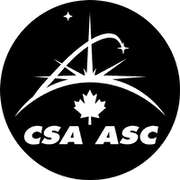CANCEL

STS-41-G (Challenger)
Launch Date
October 5, 1984
Craft
Space Shuttle
Status
Past
Crew
7

STS-41-G (Challenger)
Launch Date
October 5, 1984
Craft
Space Shuttle
Status
Past
Crew
7
Overview
The 13th flight of the space shuttle program and the sixth of Challenger, STS-41G holds many distinctions. As the first mission focused almost entirely on studying the Earth, it deployed a satellite, employed multiple instruments, cameras, and crew observations to accomplish those goals.
The STS-41G crew set several firsts, most notably as the first seven-member space crew. Other milestones included the first astronaut to make a fourth shuttle flight, the first and only astronaut to fly on Challenger three times and on back-to-back missions on any orbiter, the first crew to include two women, the first American woman to make two spaceflights, the first American woman to conduct a spacewalk, and the first Canadian and the first Australian-born American to make spaceflights.
Crafts

Space Shuttle
The first reusable launch and landing spacecraft, the Space Shuttle began a new chapter of human space exploration. It launched like a rocket but landed on a runway like a plane. Shuttle crews deployed dozens of commercial satellites and two interplanetary probes to Venus and Jupiter. The Shuttle served as a mini space station and hosted hundreds of biomedical, psychological, physiological, materials science, and physics experiments that have directly benefited life on Earth. The five flight-worthy Shuttles -- Columbia, Challenger, Discovery, Atlantis, and Endeavour -- flew 135 missions over 30 years. The Shuttles helped construct the Russian Mir space station and brought nearly 80% of the International Space Station to orbit. Shuttles also deployed and serviced the Hubble Space Telescope.
Launch Crew

158
David C. Leestma


3
MISSIONS
22.2
DAYS IN SPACE
1
SPACEWALKS
0.1
DAYS SPACEWALKING


160
Marc Garneau


3
MISSIONS
29.1
DAYS IN SPACE
-
SPACEWALKS
-
DAYS SPACEWALKING




156
Jon A. McBride


1
MISSIONS
8.2
DAYS IN SPACE
-
SPACEWALKS
-
DAYS SPACEWALKING


157
Kathryn D. Sullivan


3
MISSIONS
22.2
DAYS IN SPACE
1
SPACEWALKS
0.1
DAYS SPACEWALKING


159
Paul D. Scully-Power



1
MISSIONS
8.2
DAYS IN SPACE
-
SPACEWALKS
-
DAYS SPACEWALKING



110
Robert L. Crippen


4
MISSIONS
23.6
DAYS IN SPACE
-
SPACEWALKS
-
DAYS SPACEWALKING


128
Sally Ride


2
MISSIONS
14.3
DAYS IN SPACE
-
SPACEWALKS
-
DAYS SPACEWALKING




